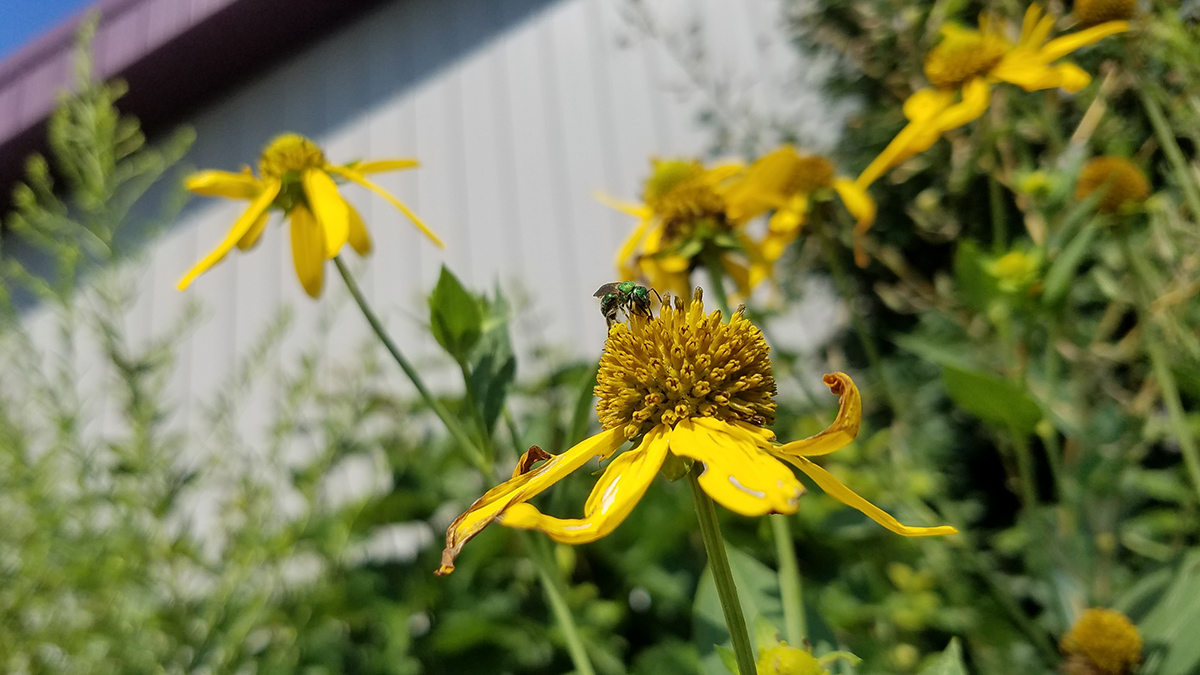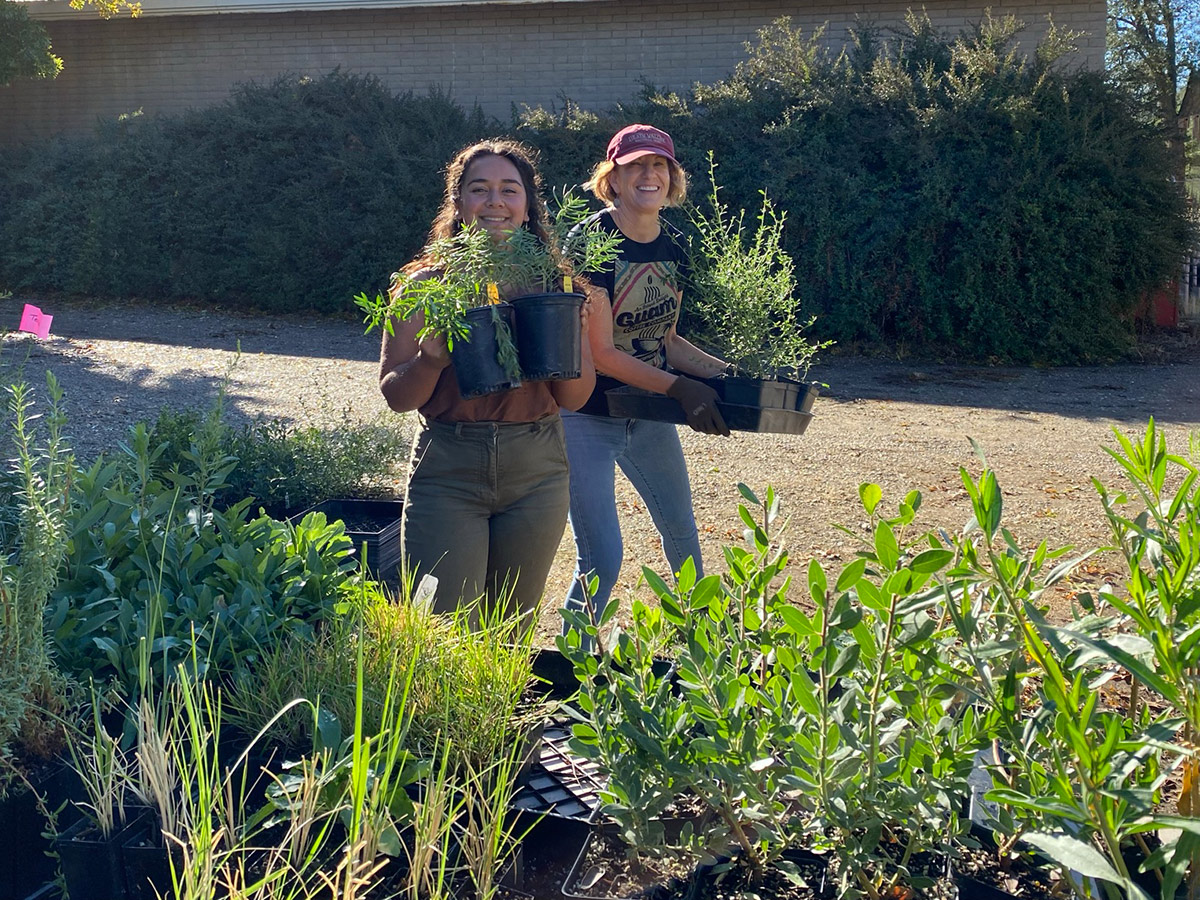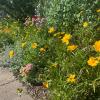Residential areas provide important food and shelter for many of our threatened and endangered pollinators, which are in decline around the world. Making your home pollinator-friendly is straightforward and rewarding. By establishing pollinator habitat in your home garden, schools, parks or other community spaces, you become an active part of helping to protect and restore at-risk species.

Before you plant, get set for success
Know your natives
Native plants are adapted to the environmental conditions in which they evolved. When placed in areas that mimic where they came from, they are oftentimes less likely to suffer from pests than many ornamentals. If you’re unfamiliar with what plants to choose for your region, be sure to check out our regional Pollinator Friendly Native Plant Lists. Xerces also manages a Native Plant, Seed and Services Directory and the Milkweed Finder to help you source native plant materials and services in your area.
Right plant, right place
Healthy plants are better at defending themselves against pests. Plant in areas with appropriate conditions such as sun vs shade, wet soil vs dry soil. Contact your local extension agency for more information on how to characterize your soil.
Find a pollinator-friendly nursery
When buying plants for your pollinator garden, it’s important to ask the plant nursery about their pesticide practices. Unfortunately, many plants that are labeled as pollinator friendly are treated with pesticides that can be toxic to bees and other beneficial insects. Xerces’ Buying Bee-Safe Nursery Plants guide is available to help you.

Embrace non-chemical pest management
Go pesticide free
A home garden truly can thrive without pesticides, and this is one of the most important ways to protect pollinators and beneficial insects in your garden.
Talk to your landscaping company
If you use a landscaping company, talk to them about their practices and let them know you prefer non-chemical weed and pest management.
Check your fertilizer
Sometimes insecticides are mixed in with fertilizers with the intention of performing two tasks at the same time. Be sure to read labels carefully and ensure that any fertilizer purchases—especially for turf—don’t contain added insecticide. Organic fertilizers are best, and if you’re not familiar with their uses and efficacy, you can reach out to your local extension agency for more information and guidance.
Choose lower-risk treatments
If you decide to use a pesticide, choose the most targeted, reduced-risk product available. Always start with organic options (although some are still toxic to pollinators), and avoid multi-use products marketed for disease, insects, and/or weed control, as these combination products can be very toxic to beneficial insects. Some lower-toxicity options for home garden use include insecticidal soap, horticultural oils, and kaolin clay.
Time your application
Importantly, avoid application of any insecticides where bees are present! To prevent residual contact, avoid any applications when plants are in bloom (including flowering weeds).

Weed wisely
Embrace your wild side
Consider leaving part of your yard a bit more “wild” or unmanaged, especially any beds with native plants. These unmanaged areas tend to provide more food and nesting habitat for pollinators.
Expel invasives
It’s important to distinguish between unwanted native weeds and weeds that truly are invasive, which are best to completely remove. Check the National Invasive Species Information Center (NISIC) or reach out to your local extension agency to identify invasive plants.
Stop weeds before they start
Instead of using herbicides, weed by hand or with hand tools, and time your weeding for early in the plant’s growth cycle to prevent it from going to seed. If you mulch, be aware that heavy mulch can block access to the ground for soil nesting bees. Select organic and untreated mulches rather than colored or rubber mulch.
For more ideas on effective weed management without herbicides, check out our Organic Site Preparation for Wildflower Establishment guide.

A nibbled garden is a healthy garden
We often sound the alarm when insect populations are visible in our gardens, yet the vast majority of insects are not pests. While a chomping caterpillar can quickly devour a juicy leaf, that caterpillar will one day turn into a beautiful butterfly or moth. All insects, even aphids, play an important role in the food web, transforming plant tissues into a protein rich snack for other animals.
The signs of these insects in our gardens—a few holes in a leaf, a yellow or brown stem—often indicate a thriving micro ecosystem with a diverse array of organisms. Infestations rarely kill garden plants and if you’ve got “pests” present, their predators are likely nearby too, helping to keep their populations in check. If you are concerned with pest damage or are unsure of the cause, your local extension agency is a great resource for this as well.
Enjoy your pollinator refuge!
So you’ve got your native plant list dialed in, you’ve incorporated many features that support overwintering pollinators and other invertebrates, you’ve fully embraced alternatives to chemical pest and weed management. You’re a pollinator gardening champ! But there is one more critter to consider… you!
If you’re at all like me, it’s easy to become overwhelmed by the urgency and spread of social and environmental issues our global community is faced with. Your garden—or a friend’s garden, your balcony of potted plants, or your neighborhood green space—can offer respite from these stresses. Don’t forget to carve out time and space for yourself to take some deep breaths, feel your feet on the earth, and observe the insects and other animals sharing that moment with you. They are all incredibly resilient, and we are too.




